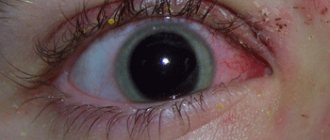Tetracycline ointment during pregnancy: safety, effectiveness and reviews
During pregnancy, the body of the expectant mother is subjected to serious stress. Against the background of weakened immunity, chronic pathologies may worsen or infectious diseases may develop. But many women prefer not to take any medications, fearing for the baby’s health. In many cases, this decision leads to complications that are much more serious than the use of drugs.
Tetracycline ointment during pregnancy is used only when absolutely necessary and under strict medical supervision. While carrying a child, it is unacceptable to exceed the dosage of the antibacterial agent and the duration of treatment.
Can Tetracycline ointment be used during pregnancy?
Tetracycline ophthalmic or external ointment is recommended by a doctor for pregnant women in extreme cases. It is prescribed if a woman has a history of pathologies that only this drug can eliminate:
- ophthalmological diseases;
- bacterial skin infections.
Before prescribing the ointment, it is necessary to inoculate a biological sample in a nutrient medium. The study helps to establish the species of the infectious pathogen and its sensitivity to antibiotics. If only tetracycline can destroy bacteria, then pregnant women are prescribed ointment in the lowest concentration.
In what cases is the drug prescribed to pregnant women?
During pregnancy, a doctor may prescribe tetracycline ointment to treat infectious inflammation of the eyes:
- bacterial conjunctivitis;
- blepharitis;
- barley.
If the patient develops a bacterial or fungal infection due to an exacerbation of herpes, a tetracycline-based remedy can also be used.
To minimize undesirable effects on the fetus, a 1% preparation is used for application to the skin.
Manifestations of herpes and pregnancy are interrelated. During the period of bearing a child, the body's defenses weaken, which contributes to the activation of viruses.
Effect of the drug on the fetus
The antibiotic tetracycline is not used to treat pregnant women due to its teratogenic effects on the fetus. The drug easily penetrates all biological barriers, including the placenta. A significant amount of the drug accumulates in fetal tissues:
The result is their demineralization, or excessive fragility. Improper bone formation causes various congenital pathologies of the child’s musculoskeletal system.
Contraindications for tetracycline ointment
Tetracycline ointment (the instructions for use contain information when the product is prohibited for use) is contraindicated in the following cases:
- for fungal dermatological diseases, since the antibiotic helps to reduce immunity, as a result, the activity of the fungus increases;
- intolerance to components or allergies to them;
- children under 7 years of age and the period of teething in children;
- liver and kidney pathologies in the acute stage;
- You should absolutely not take the ointment orally.
During the course, you need to limit your time in the sun, as the ointment can cause increased skin pigmentation. Driving, as well as performing work that requires special attention, is not recommended during treatment due to impaired vision clarity.
Instructions for use
The frequency of use of Tetracycline eye ointment during pregnancy is determined by the attending physician.
Typically, the external agent is applied 5 times a day, but during pregnancy, 3 applications are sufficient. 1% Tetracycline ointment should be carefully placed behind the eyelid. Before carrying out the procedure, you must wash your hands and wipe them with a napkin soaked in a solution of chlorhexidine or miramistin.
To ensure that the product is evenly distributed, you need to lightly massage the outer area of the eyelid after application. A 3% antibacterial drug is intended only for the treatment of skin diseases. The product is applied to the damaged areas in a thick layer, and a sterile napkin is placed on top. The bandage can be secured with a bandage or adhesive tape.
Pharmacological action and group
Tetracycline ointment is included in therapeutic regimens in the event of the development of pathologies caused by pathogenic bacteria. The active substance from the group of antibiotics quickly penetrates microbial cells and disrupts protein synthesis. As a result, pathogenic microorganisms lose their ability to reproduce. The product is used for diseases caused by the following bacteria:
- staphylococci;
- streptococci;
- coli;
- enterobacteria.
With a course of use of the drug, inflammation quickly stops, redness and swelling disappear.
Even after a single application, the intensity of pain, pain and burning decreases.
And the lanolin and petroleum jelly contained in the ointment soften and moisturize the skin.
Indications and contraindications for use
When asked whether Tetracycline ointment can be used during pregnancy, doctors answer negatively.
Using an antibacterial agent without the permission of an ophthalmologist or dermatologist is strictly prohibited.
The drug is prescribed during pregnancy only if it is impossible to replace it with eye drops or other ointments with antibiotics. Its absolute contraindications also include:
- children under 8 years of age;
- lactation period;
- individual sensitivity to the active ingredient and auxiliary components.
The product has proven itself in the treatment of skin diseases - acne, eczema, furunculosis, rashes. The antibiotic is also used in the treatment of herpes complicated by a bacterial infection.
Possible complications caused by the drug
The need to use antibiotics usually causes panic in a pregnant woman. There is a difference between taking medications orally and applying them to the skin or mucous membranes. When used externally, a small amount of the active ingredient penetrates into the systemic circulation. But even such a concentration can provoke:
- nausea and vomiting;
- dizziness and headaches.
Sometimes after applying the ointment, an allergic reaction such as urticaria occurs. A small rash appears on the skin, its surface becomes red and swollen.
Tetracycline ointment during pregnancy: can it be used, instructions, recommendations and reviews
Tetracycline ointment during pregnancy is used only when absolutely necessary and under strict medical supervision. While carrying a child, it is unacceptable to exceed the dosage of the antibacterial agent and the duration of treatment.
Can Tetracycline ointment be used during pregnancy?
Tetracycline ophthalmic or external ointment is recommended by a doctor for pregnant women in extreme cases. It is prescribed if a woman has a history of pathologies that only this drug can eliminate:
- ophthalmological diseases;
- bacterial skin infections.
Before prescribing the ointment, it is necessary to inoculate a biological sample in a nutrient medium. The study helps to establish the species of the infectious pathogen and its sensitivity to antibiotics. If only tetracycline can destroy bacteria, then pregnant women are prescribed ointment in the lowest concentration.
In what cases is the drug prescribed to pregnant women?
During pregnancy, a doctor may prescribe tetracycline ointment to treat infectious inflammation of the eyes:
- bacterial conjunctivitis;
- blepharitis;
- barley.
If the patient develops a bacterial or fungal infection due to an exacerbation of herpes, a tetracycline-based remedy can also be used.
To minimize undesirable effects on the fetus, a 1% preparation is used for application to the skin.
Manifestations of herpes and pregnancy are interrelated. During the period of bearing a child, the body's defenses weaken, which contributes to the activation of viruses.
Instructions for use
The frequency of use of Tetracycline eye ointment during pregnancy is determined by the attending physician. Typically, the external agent is applied 5 times a day, but during pregnancy, 3 applications are sufficient. 1% Tetracycline ointment should be carefully placed behind the eyelid.
Before carrying out the procedure, you must wash your hands and wipe them with a napkin soaked in a solution of chlorhexidine or miramistin.
To ensure that the product is evenly distributed, you need to lightly massage the outer area of the eyelid after application. A 3% antibacterial drug is intended only for the treatment of skin diseases. The product is applied to the damaged areas in a thick layer, and a sterile napkin is placed on top. The bandage can be secured with a bandage or adhesive tape.
Pharmacological action and group
Tetracycline ointment is included in therapeutic regimens in the event of the development of pathologies caused by pathogenic bacteria. The active substance from the group of antibiotics quickly penetrates microbial cells and disrupts protein synthesis. As a result, pathogenic microorganisms lose their ability to reproduce. The product is used for diseases caused by the following bacteria:
- staphylococci;
- streptococci;
- coli;
- enterobacteria.
With a course of use of the drug, inflammation quickly stops, redness and swelling disappear.
Even after a single application, the intensity of pain, pain and burning decreases.
And the lanolin and petroleum jelly contained in the ointment soften and moisturize the skin.
Indications and contraindications for use
When asked whether Tetracycline ointment can be used during pregnancy, doctors answer negatively.
Using an antibacterial agent without the permission of an ophthalmologist or dermatologist is strictly prohibited.
The drug is prescribed during pregnancy only if it is impossible to replace it with eye drops or other ointments with antibiotics. Its absolute contraindications also include:
- children under 8 years of age;
- lactation period;
- individual sensitivity to the active ingredient and auxiliary components.
The product has proven itself in the treatment of skin diseases - acne, eczema, furunculosis, rashes. The antibiotic is also used in the treatment of herpes complicated by a bacterial infection.
Possible complications caused by the drug
The need to use antibiotics usually causes panic in a pregnant woman. There is a difference between taking medications orally and applying them to the skin or mucous membranes. When used externally, a small amount of the active ingredient penetrates into the systemic circulation. But even such a concentration can provoke:
- nausea and vomiting;
- dizziness and headaches.
Sometimes after applying the ointment, an allergic reaction such as urticaria occurs. A small rash appears on the skin, its surface becomes red and swollen.
Reviews
Reviews about the use of Tetracycline ointment during pregnancy are left by women who used it with concern.
Irina, Novocherkassk: Before conception, I treated my dermatitis only with 3% Tetracycline ointment. No other antibiotics, even the most modern ones, helped. At 2 months of pregnancy, the disease worsened sharply.
First I applied the medicine, and only then I read the instructions and started calling the gynecologist. The doctor said not to worry, but to use only 1% product and not often. The baby and I are doing well.
Tatyana, Krasnoyarsk: I completely trusted my doctor, so I treated purulent conjunctivitis with Tetracycline ointment. This was around 4 months pregnant. I put the product behind the eyelid 2 times a day and always at night. After 3 days of treatment, there was no trace of conjunctivitis left. There were no negative consequences from using the ointment.
Reviews
Reviews about the use of Tetracycline ointment during pregnancy are left by women who used it with concern.
Irina, Novocherkassk: Before conception, I treated my dermatitis only with 3% Tetracycline ointment. No other antibiotics, even the most modern ones, helped. At 2 months of pregnancy, the disease worsened sharply. First I applied the medicine, and only then I read the instructions and started calling the gynecologist. The doctor said not to worry, but to use only 1% product and not often. The baby and I are doing well.
Tatyana, Krasnoyarsk: I completely trusted my doctor, so I treated purulent conjunctivitis with Tetracycline ointment. This was around 4 months pregnant. I put the product behind the eyelid 2 times a day and always at night. After 3 days of treatment, there was no trace of conjunctivitis left. There were no negative consequences from using the ointment.
How to use Tetracycline ointment during pregnancy
While waiting for a baby, a woman becomes more vulnerable. Tetracycline ointment during pregnancy may be useful in the following cases:
- Infectious eye diseases. Typically, women are faced with conjunctivitis, stye, keratitis or blepharitis, and these diseases can bother the patient several times during pregnancy.
- Skin diseases. This includes diagnoses such as streptoderma, folliculosis and folliculitis and other diseases that can lead to purulent abscesses.
- Eczema.
- Trophic ulcer. Your doctor may prescribe antibiotics if the skin condition remains persistently poor (unhealing wound) for at least 6 weeks.
Some pregnant women, having all the indications for it, still refuse to take tetracycline ointment. It is extremely unwise to do this, because the consequences of lack of therapy can be much higher than the possible harm to the fetus during treatment. In other words, prescribing an antibiotic is a justified measure that should not be feared. The main thing is that such an appointment is made by a specialist - the attending physician.
Effect of the drug on the fetus
What exactly are the risks of using tetracycline ointment during pregnancy? This antibiotic changes the bone structure of tissues. It disrupts the natural process of mineralization of the fetus growing in the womb. This can lead to congenital pathologies of the baby’s musculoskeletal system. For this reason, the use of the drug is undesirable in the 3rd trimester of pregnancy. To minimize risks, the doctor may recommend that the patient reduce the traditional frequency of use during the day (no more than 3 times a day) or use a 1% composition. Before starting ointment therapy, familiarize yourself with the composition and indications for the product.
Recommendations for use for herpes and dosage
Tetracycline ointment is a bacteriostatic antibiotic.
If you start treatment at the first symptoms of herpes infection, the development of the disease stops within 24 hours. External ointment 3% is carefully applied to the affected area, covering 1 cm of healthy skin to avoid enlargement of the inflamed area, 1-2 times a day. You can fix them with bandages and change them every 12 hours; after application, do not rinse with water.
Eye ointment 1% is squeezed out in a strip 3-5 mm long onto the inner side of the lower eyelid 1 to 3 times a day. After each use, wipe the tube spout with a clean cotton swab or pad to prevent germs from entering. The course of therapy/prevention can range from several days to 2-3 weeks, depending on the degree of damage to the dermis or mucous membrane of the eyes, and is prescribed by a doctor on an individual basis.
If the blister bursts, only the edges of the wound are lubricated so that the drug does not get inside and cause suppuration.
Composition and description of the drug
The main active ingredient is the substance of the same name – tetracycline. This is an antibiotic from the tetracycline group, which has been used in human therapy for just over half a century. It was isolated from special radiant fungi a little later than penicillin, and is now quite well studied. Artificial additional components in the composition of drugs only enhance the effect of tetracycline.
Tetracycline has a number of advantages over antibacterial agents of other groups. In particular, it has a wide range of effects, which means its use can destroy various bacteria. The mechanism of action is as follows. Tetracycline blocks the protein synthesis of pathogens, and the reproduction and further spread of the microbe stops. The inflammatory process is quickly eliminated. Tetracycline drugs are most effective when affecting mucous membranes, skin and joint tissues. This means that when applying the product to the eye tissue, you can expect a good therapeutic result.
Since tetracycline ointment works well specifically on superficial tissues, it can be used topically, bypassing the systemic circulation. This is especially important during pregnancy, since it is with the bloodstream that parts of all medications used by a woman are carried into the body of the growing fetus through the placenta.
By the way, taking tetracycline orally for a long time, one can notice its accumulation in growing bone tissue and teeth, which subsequently provokes processes of their destruction.
Pharmacodynamics of tetracycline ointment
Tetracycline ointment (instructions for use describe the effect of the drug's components on the body and bacteria), thanks to the main and auxiliary components, has the effect described below.
Action of the ointment:
- Blocks protein synthesis in cells of gamma-positive and gamma-negative bacteria. As a result, the pathogen stops growth and reproduction, which leads to the gradual death of bacteria.
- Prevents drying of the mucous membrane of the eyes (dryness can be caused by impaired functioning of the lacrimal canal or toxins released by bacteria).
- Has a slight healing effect.
Viruses, anaerobic bacteria and fungi are not susceptible to tetracycline. If these pathogens are present (with the exception of fungus), an antibiotic can be prescribed for severe forms of the disease to prevent the addition of a bacterial infection.
Indications
Indications for the use of tetracycline ointment are very wide. Among them are ophthalmological, skin and other diseases:
- conjunctivitis;
- barley;
- streptoderma;
- acne;
- burns;
- trophic ulcers;
- boils;
- trachoma;
- keratitis;
- blepharitis of an infectious nature;
- staphyloderma.
It is very important that all diseases assume a bacterial etiology. If the reason is the activation of a virus or fungal pathogen, or the person has an inflammatory allergic process, then tetracycline ointment will not have the desired therapeutic effect. It would be better if, before starting therapy, the doctor prescribes the patient the appropriate tests (bacterial culture) to identify the pathogen. Otherwise, there is a possibility that the drug will be ineffective for a viral infection, or the patient may have resistance (insensitivity) to this type of antibiotic. In general, tetracycline drugs are not considered very dangerous and harmful, and therefore they are used even in the youngest patients - newborn babies.
Contraindications and side effects
There are a number of conditions and diagnoses for which the use of tetracycline ointment is not recommended:
- leukopenia;
- individual intolerance to a component of the drug;
- liver failure;
- mycoses;
- pregnancy and lactation (limited use);
- The patient's age is under 18 years.
The last point should be discussed in more detail. This antibiotic can cause irreversible changes in the bone structure, which can be critical for a growing child’s body. In some cases, pediatricians still prescribe tetracycline ointment to young patients, however, it is recommended to use products with a reduced content (1% instead of drugs with a standard concentration of 3%).
Side effects may also occur during tetracycline therapy. In addition to traditional itching, burning, redness and swelling, the patient may experience digestive disorders (indigestion, diarrhea, constipation), loss of appetite, photosensitivity, dysphagia and Quincke's edema. Of course, these cases are quite rare, but their occurrence cannot be completely ruled out, especially in pregnant women.
Long-term therapy with tetracycline ointment can lead to candidiasis, deficiency of B vitamins, and thrombocytopenia.
Why is it likely that a fungal infection will develop during treatment with tetracycline? Exposure to the antibiotic weakens local immunity, and fungal pathogens that are present on the skin and were previously dormant begin to become active.
Side effects
During treatment with tetracycline ointment, the following negative reactions may occur:
- the appearance of pigment spots during prolonged exposure to the sun;
- impaired vision clarity. Goes away within an hour after applying the ointment;
- photophobia;
- rashes, swelling and itching of the skin. If an allergic reaction has not been ruled out;
- lack of B vitamins;
- in extremely rare cases, diarrhea and abdominal pain;
- addition of a fungal infection.
If the ointment was used during the teething period of a child or for a long time, then the tooth enamel may darken. The effect does not go away after stopping the course.
How to replace Tetracycline
If it is necessary to use antibiotics, the doctor may prescribe drugs from other groups:
- Tobrex. Tobramycin in its composition well suppresses the activity of Pseudomonas aeruginosa and Escherichia coli, staphylococcus, streptococcus and a number of other most common pathogens. When used topically, the components of the drug do not enter the bloodstream, and therefore are indicated for use by pregnant women and women during lactation. The cost of a 5 ml bottle of the drug is approximately 200 rubles.
- Dexa-gentamicin. This is a complex drug created on the basis of several active substances. Gentamicin is an antibiotic of a number of aminoglycosides. It shows good activity against most pathogens (with the exception of staphylococcus). Dexamethasone helps reduce inflammation and relieve itching. The manufacturer indicates that the drug should not be used in the 1st trimester of pregnancy.
- Albucid. Sulfacyl sodium in its composition is not an antibiotic, although it exhibits antimicrobial activity. It is not prohibited for local use for indications during pregnancy, but in the later stages its use can cause problems with the functioning of the liver in the expectant mother. This is the most affordable drug. At the pharmacy, a bottle with a capacity of 10 ml will cost the patient no more than 50 rubles.
Tetracycline ointment is a good germ suppressant that can even be used by pregnant women. The main thing is to follow the therapeutic regimen prescribed by your doctor and inform him about your condition during treatment.
Prescription of tetracycline ointment during pregnancy
Tetracycline tablets are used to treat pneumonia, sore throat, kidney disease, intestinal infections, sexually transmitted diseases and many other diseases.
During pregnancy, taking tetracycline tablets is strictly contraindicated, since once the active substance enters the mother's blood, it crosses the placenta. It accumulates in the bones and tooth buds of the child and, as a result, their mineralization is disrupted and bone tissue is destroyed.
Tetracycline ointment, placed behind the eyelid or applied to the skin, acts locally. It will not be able to overcome the placental barrier and reach the child in quantities dangerous for its development.
Note: can Snoop be used by pregnant women?
It is useful to know why pregnant women undergo electrophoresis procedures.
Tetracycline is used in the treatment of a large number of diseases, but in the form of an ointment it is used to treat the following types of diseases:
- inflammatory processes in the eye area;
- skin diseases of infectious etiology.
Before prescribing tetracycline ointment during pregnancy, an analysis must be performed to determine the reaction of the infectious agent to a specific antibiotic. The specialist collects a smear with a cotton swab from the mucous membrane of the eye (conjunctiva). The type of bacteria that caused the disease is identified by inoculating the resulting material on a nutrient medium.
Tetracycline-containing drugs are prescribed only if the infectious agent reacts exclusively to tetracycline, and other drugs approved during pregnancy do not have a therapeutic effect.
Important: tetracycline is effective if the disease is caused by bacterial infections, but is completely useless for fungal, viral diseases and exposure to group A streptococci.
Eye diseases
For the treatment of infectious ophthalmological diseases, tetracycline ointment with 1% active ingredient is used.
Most often, tetracycline eye ointment is prescribed during pregnancy for conjunctivitis. She provides emergency care that will help prevent bacterial infection of the eye.
The box contains a special spatula, with which it is convenient to apply the drug to the site of inflammation of the eye. For some diseases, the ointment is applied behind the lower eyelid.
Before the procedure, you need to thoroughly wash your hands with soap and stand in front of a mirror in a well-lit place. Initially, the affected eye is prepared. It is cleaned of secretions using a cotton swab dipped in boiled chilled water, a weak solution of furatsilin or boric acid.
If the discharge has dried and crusts have formed, they are moistened, left to soak for 5-10 minutes, and carefully removed using cotton swabs or swabs. Then the required amount of medicine is squeezed onto the spatula. With your free hand, the lower eyelid is pulled back and the ointment is applied to the mucous membrane of the eye. Close the eye and massage with a cotton pad for about half a minute to evenly distribute the medicine over the entire eyeball.
If the tube with the medicine has a special elongated spout, then the medicine can be applied directly behind the lower eyelid, without using a spatula.
To do this, with clean, soapy fingers, pull back the lower eyelid, squeeze out a strip of medicine about 0.5 cm. In this case, it is especially important to keep the spout clean - wipe it after use with a cotton swab and avoid contact with the eye during application.
Advice: if there is a need to apply ointment to both eyes, be sure to disinfect it after applying it to the first eye or use 2 spatulas. This will help avoid transferring infection from one eye to the other.
The drug has an enveloping effect and does not sting, as it does not contain painful components.
Skin diseases
For the treatment of skin diseases and some gynecological diseases (vulvitis), 3% ointment is used. Do not apply the medicine to irritated or inflamed skin - immediately after shaving or using scrubs.
When treating acne, the drug is applied pointwise. Before application, the skin is cleaned of sebaceous secretions and cosmetics. The duration of treatment, depending on the severity of the disease, ranges from 1 week to 2 months.
When treating pustular infections, it is advisable to use compresses. A thick layer of ointment is applied to the gauze fabric, so that the coverage area is slightly larger than the area of the affected skin. This is necessary to prevent the spread of foci of infection. The compress lasts about 12 hours, then it is changed. The course of treatment depends on the severity of the disease and the speed of recovery of the affected areas.
Tip: If tetracycline ointment is stored in the refrigerator, it should be kept at room temperature for a while before applying. This is due to the fact that lanolin and petroleum jelly, which are excipients, harden in the cold, which makes application difficult.
Tetracycline ointment - the effect of the drug and recommendations for use
Tetracycline ointment is a bacteriostatic antibiotic that stops the proliferation of pathogenic microorganisms by suppression at the protein level. The drug has a wide spectrum of action. It copes well with staphylococcal, streptococcal, gonorrheal, chlamydial, salmonella and other bacterial infections, but does not act on fungi, group A streptococci and viruses.
The antibiotic tetracycline is used in the treatment of a wide range of diseases, but its use in ointment form is limited. The drug is prescribed for the treatment of two types of diseases:
- Inflammations in the eye area - conjunctivitis, blepharitis, trachoma, stye, keratitis, etc.
- Infectious skin pathologies - acne, eczema, furunculosis, rashes or folliculitis.
Herpes on the lip are small watery blisters that contain a viral infection. Tetracycline ointment itself does not treat this viral disease, but its use can prevent the rash from spreading to other areas of the skin.
To treat colds, apply 3% tetracycline ointment four times a day. A thick layer of the drug is applied to the affected skin, and the healthy area around the vesicle is additionally covered - about 1 cm. The sore cannot be scratched or peeled off, therefore, if necessary, the lubricated area is covered with a gauze swab (compress), which is removed after 12 hours and replaced with a new one.
The sooner you start therapy, the greater the chance of stopping the exacerbation of the disease. If you apply tetracycline ointment to a herpes at the first symptoms, it will most likely go away within a day. Later treatment will require a course of 3-4 days.
When the inflammatory process stops, treatment can be completed. For prevention, you need to use tetracycline for another day. If the ointment does not help, replace it with the antiviral drug acyclovir.
The ointment is yellow in color, available in aluminum tubes of 10, 30 and 50 g. The content of the active substance - tetracycline hydrochloride - can be 1% and 3%, the rest is auxiliary components (anhydrous lanolin and petroleum jelly). The drug can be purchased at a pharmacy without a prescription from a doctor.
When treating eye infections, 1% ointment is used:
- Styes, bacterial blepharitis or conjunctivitis begin to be treated immediately after the first symptoms are detected (purulent discharge from the eyes, redness of the mucous membrane, discomfort) until they stop + two days of prophylactic use.
- Trachoma (chlamydial inflammation) is treated for 14-17 days. Additionally, you must take other antibacterial agents prescribed by your doctor. The healing process should be monitored by an ophthalmologist to prevent possible complications - the appearance of scars on the eyelids, loss of vision or changes in the cornea.
- To prevent infection in the eye area after injury or surgery, it is recommended to use the ointment for 2-3 days.
In the treatment of skin diseases, 3% ointment is used:
- Acne is treated with tetracycline ointment for 1-8 weeks, the exact period of the therapeutic course is calculated depending on the severity of the disease.
- Pustular infections (boils, inflammation of hair follicles), ulcers and eczema are recommended to be treated with compresses from this ointment - a thick layer of medicine is applied to a gauze bandage, then the product is applied to the affected area and left for 12 hours. The procedure is repeated daily until the skin is completely healed.
- Tetracycline ointment is also used in gynecology for vulvitis (inflammatory process of the external genitalia). This infection is treated for 1 week.
For eye diseases, the ointment is applied daily 1-3 times directly behind the lower eyelid: it is slightly pulled back with your fingers and 3-5 mm of medication is squeezed onto the mucous membrane.
Avoid contact of the tube with the inflamed area and wipe the tip after use with a clean swab to avoid introducing dirt inside. Tetracycline ointment should be applied to the skin in a thin layer (2-3 times a day), covering healthy areas around the inflammation. It is first necessary to cleanse the skin of cosmetics, sebaceous gland secretions and other contaminants. If acne appears due to mechanical irritation (shaving, using harsh scrubs, etc.), you will have to wait at least 30 minutes before using the medicine.
Tetracycline ointment is contraindicated for:
- leukopenia;
- extensive fungal infection (mycosis);
- allergies to tetracycline substances;
- liver failure;
- stomach ulcer.
Do not use tetracycline ointment simultaneously with penicillins , drugs with metal ions or antacids, cephalosporins and retinol. It is recommended not to combine the medicine with colestipol or cholestyramine, as this impairs the absorption of the antibiotic.
Possible side effects from using tetracycline ointment include:
- allergic skin reactions (rash, itching, swelling);
- visual impairment (photosensitivity - hypersensitivity to light);
- darkening of teeth (with long-term therapy);
- candidiasis (fungal infection).
Despite the low percentage of absorption of tetracycline when applied topically, using eye ointment during pregnancy or breastfeeding is highly not recommended. This medicine negatively affects the development of bone structures in the fetus or newborn. In this case, the child may develop hypoplasia of tooth enamel.
Tetracycline ointment is contraindicated for children from infants to 8 years of age . The active substance affects the color of tooth enamel, and if this occurs during the development of bone structures, the changes will be irreversible. The use of the drug in newborns also contributes to the development of fatty hepatosis (accumulation of fat cells in the liver).
All information is provided for informational purposes. And it is not an instruction for self-treatment. If you feel unwell, consult a doctor.
Based on materials from pro-gerpes.ru
Is it possible for pregnant women to take tetracycline ointment, you ask? And not a single doctor will have the most correct and reasonable answer. Read our article.
Antibacterial drug Tetracycline ointment is an effective and proven antibacterial drug, which includes the antibiotic tetracycline. This is a broad-spectrum antibiotic, which means it can solve a number of problems.
When is tetracycline ointment prescribed during pregnancy? Before prescribing tetracycline ointment during pregnancy or in normal condition, it is necessary to undergo an analysis - bacterial culture, which allows you to determine the pathological flora and its sensitivity to various groups of antibiotics. And tetracycline in any form is prescribed only after testing and provided that the infectious agent is sensitive only to tetracycline. This means that a pregnant woman will not be able to use medications approved for her condition. In this case, it is necessary to take into account the duration of pregnancy, the duration of use of the drug with tetracycline, and also weigh the benefits for the woman and the risks for the baby.
Scope of application: Tetracycline ointment during pregnancy can be prescribed if the expectant mother has the following diseases:
- Skin infections;
- Folliculitis, streptoderma, folliculosis, acne and other suppurations;
- Trophic ulcer;
- Eye infection;
- Eczema.
However, tetracycline eye ointment is most often prescribed during pregnancy.
How to use tetracycline ointment during pregnancy Tetracycline ointment during pregnancy is used quite simply: it is applied to the affected area of the skin in a thin layer or placed in the eye (behind the eyelid) using a special spatula (it is included in the ointment package). You can use bandages soaked in ointment, which are applied to the affected area 2 times a day. The area treated with tetracycline should not be wetted with water. When treating acne, the ointment is applied pointwise.
Tetracycline eye ointment during pregnancy is not only prescribed most often, but is also characterized by a minimum concentration of antibiotic and the greatest safety for the baby. The latter is explained by the fact that ointment placed behind the eyelid will not be able to pass the placental barrier and reach the fetus.
Why is tetracycline ointment dangerous during pregnancy? In general, tetracycline ointment can be used, but with great caution. Since the active substance of the drug can lead to impaired mineralization of bone tissue and, accordingly, to the development of skeletal deformity in the fetus, as well as to disruption of the rudiments of teeth, the use of ointment is considered as an emergency measure. In most cases, tetracycline eye ointment during pregnancy is prescribed due to conjunctivitis, which is viral in nature and without antibiotic treatment can provoke the development of a parallel bacterial infection. A woman’s weakened body certainly cannot cope with this alone. Accordingly, in this case, the use of this antibiotic is most justified. However, to suppress the infection, additional measures are necessary, for example, Viferon suppositories.
Based on materials from pregnancy-club.ru
Contraindications and side effects
Like any medicine, tetracycline ointment has a number of contraindications.
It is strictly prohibited:
- when large areas of skin are affected by fungi;
- with a low level of leukocytes in the blood;
- for some diseases of the gastrointestinal tract;
- in case of liver failure;
- if the patient is allergic to the components of the ointment.
The simultaneous use of tetracycline ointment with certain drugs reduces its therapeutic properties. Therefore, simultaneous use with medications of a number of penicillins, antacids, retinol, and metal ions is undesirable.
Note: how to use Elidel during pregnancy.
All about what vitamins and minerals are included in the Emfetal complex.
When applying tetracycline ointment, side effects may occur:
- allergic rashes, urticaria, swelling;
- intolerance to bright light;
- when used for a long time – darkening of teeth;
- fungal infection (candidiasis).
If side effects occur, you should immediately stop using tetracycline ointment during pregnancy to avoid negative consequences and report them to your doctor.
Pregnancy is a special time in the life of every woman; during this period it is very important to closely monitor your well-being, do not hesitate to contact doctors, ask about treatment methods, prescribed medications, and use additional sources of information.
Contraindications
Like any antimicrobial drug, tetracycline ointment has side effects. It is prohibited to use the product without first consulting a dermatologist or therapist.
It is impossible to prevent the effect of the virus using ointment, and uncontrolled application can cause some external reactions from the body.
The ointment is not used for:
- extensive rashes of unknown etiology;
- fungal infection on the lips and nose;
- allergic reactions to antibiotics of this group.
Note! With long-term use of tetracycline ointment, side effects may be associated with the disease. Treatment may provoke a reaction in the form of swelling, itching and redness of the skin. The antibiotic affects the enamel of the teeth, causing it to darken over time.
Use of tetracycline ophthalmic ointment during pregnancy
Often, expectant mothers encounter inflammatory eye diseases - conjunctivitis, blepharitis, keratitis. They are caused by representatives of normal microflora - skin streptococci and staphylococci. This is due to changes in the functioning of the immune system during pregnancy, since all useful substances go towards the development of the child. Because of this, the mother has fewer leukocytes, as a result of which the protection even against her own microflora is sometimes weakened.
To treat these diseases, ophthalmologists use local remedies - eye ointments or drops. In terms of treating inflammation, ointments are more convenient - they remain on the surface of the eye longer after application. Since the disease is caused by bacteria, antibiotics are used. Tetracycline eye ointment is widely used - it is inexpensive and has a good effect on staphylococci and streptococci.
But treatment with antibacterial agents frightens the expectant mother. How does tetracycline affect a child? The answer to this question comes after understanding the mechanism of action of this antibiotic.
What is tetracycline ointment used for?
Tetracycline eye ointment is an antibiotic, so its use is recommended only as directed and after consultation with an ophthalmologist.
The product is used to eliminate the following diseases:
- Conjunctivitis. It is characterized by the development of an inflammatory process in the mucous membrane of the eye. The cause of the development of the disease may be an allergic reaction or infection of the mucous membrane.
- Keratitis. It is expressed by the development of inflammation in the cornea of the eye. The disease may be traumatic or infectious in nature.
- Blepharitis. The inflammatory process affects the edges of the eyelids. Most often it occurs due to infection.
- Trachoma. It is a chronic disease of infectious nature (caused by chlamydia). The pathogen affects the mucous membrane and cornea of the eye. The pathology is dangerous due to the development of complete blindness.
- Barley. Accompanied by a purulent inflammatory process in acute form. The disease develops as a result of an infection that affects the hair follicles of the eyelashes and the sebaceous glands near the eyes.
- Blennorea. It proceeds in the same way as barley with damage to the mucous membrane of the eye;
- Eye damage due to rosacea (a chronic disease characterized by dilation of small blood vessels near the surface of the skin).
- Thermal or chemical burns of the eyes.
- To eliminate infectious dermatological diseases with skin lesions near the eyes.
- As a prevention of infection after eye surgery.
The ointment can be prescribed by a doctor only after identifying the causative agent of the pathology, since tetracycline can only destroy bacteria.
What is tetracycline?
In medicine, this name refers to a drug from the group of antibacterial agents of the same name. The history of its use goes back about half a century - it was obtained a little later than penicillin (the first antibiotic). It was isolated naturally, since the active substance is formed in the process of life by special radiant fungi. Pharmacologists added an artificial component to the original substance, enhancing the antibacterial effect of tetracycline.
- The drug has an active effect against all groups of microbes. Few antibiotics can boast such a wide spectrum. All bacteria that live on human skin are sensitive to tetracycline.
- It disrupts bacterial growth by blocking protein production inside their cells.
- The greatest concentration of the product is created in the bones, as well as on the skin and mucous membranes. This means that tetracycline will be most effective against inflammation of these body tissues.
Composition of tetracycline ointment
Tetracycline ointment (instructions for use contain information about the composition of the drug, to exclude intolerance or allergy to the components included in the composition) contains the components listed in the table.
| Substances included in the eye ointment | Characteristics of components | |
| Active element | Tetracycline (1 g ointment contains 10 mg) | An antibiotic that has a destructive effect on bacteria. Does not dissolve in water. |
| Auxiliary components | Lanolin anhydrous | It is a binding component and also promotes deeper penetration of the main substance into the skin layers and prevents the evaporation of moisture from the surface of the skin and mucous membranes. |
| Petrolatum | Accelerates the healing process and helps retain moisture on the surface. | |
The excipients included in the ointment enhance its therapeutic effect and facilitate the application of the product.
Use in pregnant women
Tetracycline ointment during pregnancy is prescribed only by a doctor if there are strict indications. Independent use is not recommended - there are diseases against which antibiotics will not work. If eye inflammation is associated with viruses or fungi, then treatment includes appropriate medications.
Eye ointment is a white or yellowish mass that has a specific odor. It is sold in small tubes. It is important not to confuse it with another form of the drug - skin ointment. They differ in the concentration of tetracycline - the ophthalmic one contains 1% of the active substance, which is indicated in the name on the package.
Instructions
Doctors usually do not dwell on the intricacies of using the drug, as they hope for the “literacy” of their patients. But it is knowledge of the correct technique for performing the procedure that ensures the quick effect of treatment.
The amount of product applied and procedures during the day is prescribed only by the doctor. He determines the timing of treatment based on the type of disease detected.
Indications
A common symptom that unites all indications is the presence of inflammation in the eye caused by bacteria. But the diseases themselves and their manifestations can be different. It depends on what part of the eye is affected - the mucous membrane, the eyelid, or the surface of the eyeball itself.
Tetracycline eye ointment is prescribed, essentially, “at random,” since microorganisms that cause inflammation are always introduced from one’s own skin. Before the first procedure of applying the ointment, the doctor must take a smear from the mucous membrane (conjunctiva) with a cotton swab.
This material is then inoculated onto a nutrient medium to determine the type of bacteria that caused the development of the disease.
Based on the results of this study, treatment can be changed by prescribing a more appropriate antibacterial drug.
Conjunctivitis
Conjunctivitis is an inflammation of the mucous membrane of the eye. It is the most common ophthalmological disease among expectant mothers - it is registered in 90%. The most favorable pathology in terms of prognosis, as it is easily cured and leaves no “traces” behind.
The disease begins acutely - with the appearance of a burning sensation or a feeling of “sand” in the eye in the evening. In the morning, the expectant mother will have difficulty opening her sore eye - the eyelashes on it will stick together. The discomfort gradually intensifies and interferes with normal vision. In the inner corners of the eyelids, discharge accumulates - mucous or white-yellow.
Inflammation caused by viruses is very different - lacrimation comes to the fore. Any movement of the eye causes discomfort and is accompanied by the release of a large number of tears. They intensify especially sharply in bright light or wind.
Blepharitis
This disease is accompanied by inflammation of the edge of the eyelids. If it is not very pronounced, then the main manifestation is scales around the base of the eyelashes. Outwardly, they look like dandruff - small, white and easy to remove. This form does not require the use of eye ointment - daily wiping the eye with a swab is sufficient.
The purulent form is accompanied by pain and burning in the eye, as well as the formation of small ulcers along the edge of the eyelid. They are dangerous because they can increase and lead to adhesions of the mucous membranes during healing.
Keratitis
It is characterized by inflammation of the outer transparent membrane of the eye - the cornea. This form requires immediate treatment. If not treated in a timely manner, clouding of the cornea will form, which will lead to an irreversible decrease in visual acuity.
The first signs of the disease are pain and redness in the eye, severe lacrimation and the inability to look at the light. A few days after the onset, a cloudy spot appears on the cornea - this is an ulcer formed by bacteria.
Tetracycline ointment during pregnancy: features of use – Website about eye diseases
Often, expectant mothers encounter inflammatory eye diseases - conjunctivitis, blepharitis, keratitis. They are caused by representatives of normal microflora - skin streptococci and staphylococci.
This is due to changes in the functioning of the immune system during pregnancy, since all useful substances go towards the development of the child.
Because of this, the mother has fewer leukocytes, as a result of which the protection even against her own microflora is sometimes weakened.
To treat these diseases, ophthalmologists use local remedies - eye ointments or drops. In terms of treating inflammation, ointments are more convenient - they remain on the surface of the eye longer after application. Since the disease is caused by bacteria, antibiotics are used. Tetracycline eye ointment is widely used - it is inexpensive and has a good effect on staphylococci and streptococci.
But treatment with antibacterial agents frightens the expectant mother. How does tetracycline affect a child? The answer to this question comes after understanding the mechanism of action of this antibiotic.
In medicine, this name refers to a drug from the group of antibacterial agents of the same name. The history of its use goes back about half a century - it was obtained a little later than penicillin (the first antibiotic).
It was isolated naturally, since the active substance is formed in the process of life by special radiant fungi.
Pharmacologists added an artificial component to the original substance, enhancing the antibacterial effect of tetracycline.
- The drug has an active effect against all groups of microbes. Few antibiotics can boast such a wide spectrum. All bacteria that live on human skin are sensitive to tetracycline.
- It disrupts bacterial growth by blocking protein production inside their cells.
- The greatest concentration of the product is created in the bones, as well as on the skin and mucous membranes. This means that tetracycline will be most effective against inflammation of these body tissues.
The latter feature is crucial, as it limits the use of this drug during pregnancy. If you take the medicine orally, in the form of tablets, it spreads through the bloodstream throughout the mother's body. When the antibiotic enters the child’s body, it accumulates in the growing bone tissue and teeth, causing their destruction.
Eye ointment allows you to use the product topically - by applying it to the mucous membrane of the eyes (conjunctiva), so it is almost not absorbed into the blood and has a therapeutic effect directly at the site of inflammation. Consequently, the concentration of the antibiotic in the bloodstream is minimal and is not dangerous for the normal development of the child.
Tetracycline ointment during pregnancy is prescribed only by a doctor if there are strict indications. Independent use is not recommended - there are diseases against which antibiotics will not work. If eye inflammation is associated with viruses or fungi, then treatment includes appropriate medications.
Eye ointment is a white or yellowish mass that has a specific odor. It is sold in small tubes. It is important not to confuse it with another form of the drug - skin ointment. They differ in the concentration of tetracycline - the ophthalmic one contains 1% of the active substance, which is indicated in the name on the package.
Instructions
Doctors usually do not dwell on the intricacies of using the drug, as they hope for the “literacy” of their patients. But it is knowledge of the correct technique for performing the procedure that ensures the quick effect of treatment.
The amount of product applied and procedures during the day is prescribed only by the doctor. He determines the timing of treatment based on the type of disease detected.
- Before applying the ointment, the sore eye must be prepared by removing discharge using a cotton or gauze swab. It is pre-moistened in warm boiled water, a weak solution of furatsilin or boric acid. Clean the mucous membrane until the appearance of pus or crusts on the tampon stops.
- The tube with the product must first be removed from the refrigerator to avoid unpleasant sensations. But you cannot heat it - this will lead to spoilage of the medicine. It is enough to leave it for half an hour at room temperature.
- The product is applied using a special spatula, which is included in the package. If you don’t have it, you need to purchase it separately at the pharmacy. Squeezing the ointment directly into the eye, or spreading the medicine with your finger is not recommended.
- A small amount of the drug is applied to the tip of the shoulder blade in the form of a strip. Then use your index finger to pull back the lower eyelid and carefully place the product into the resulting pocket. After this, the eye is closed and rotational movements are made. Excess squeezed onto your eyelids can be blotted off with a clean napkin.
A common symptom that unites all indications is the presence of inflammation in the eye caused by bacteria. But the diseases themselves and their manifestations can be different. It depends on what part of the eye is affected - the mucous membrane, the eyelid, or the surface of the eyeball itself.
Tetracycline eye ointment is prescribed, essentially, “at random,” since microorganisms that cause inflammation are always introduced from one’s own skin. Before the first procedure of applying the ointment, the doctor must take a smear from the mucous membrane (conjunctiva) with a cotton swab.
This material is then inoculated onto a nutrient medium to determine the type of bacteria that caused the development of the disease.
Based on the results of this study, treatment can be changed by prescribing a more appropriate antibacterial drug.
Conjunctivitis
Conjunctivitis is an inflammation of the mucous membrane of the eye. It is the most common ophthalmological disease among expectant mothers - it is registered in 90%. The most favorable pathology in terms of prognosis, as it is easily cured and leaves no “traces” behind.
The disease begins acutely - with the appearance of a burning sensation or a feeling of “sand” in the eye in the evening. In the morning, the expectant mother will have difficulty opening her sore eye - the eyelashes on it will stick together. The discomfort gradually intensifies and interferes with normal vision. In the inner corners of the eyelids, discharge accumulates - mucous or white-yellow.
Inflammation caused by viruses is very different - lacrimation comes to the fore. Any movement of the eye causes discomfort and is accompanied by the release of a large number of tears. They intensify especially sharply in bright light or wind.
Blepharitis
This disease is accompanied by inflammation of the edge of the eyelids. If it is not very pronounced, then the main manifestation is scales around the base of the eyelashes. Outwardly, they look like dandruff - small, white and easy to remove. This form does not require the use of eye ointment - daily wiping the eye with a swab is sufficient.
The purulent form is accompanied by pain and burning in the eye, as well as the formation of small ulcers along the edge of the eyelid. They are dangerous because they can increase and lead to adhesions of the mucous membranes during healing.
Keratitis
It is characterized by inflammation of the outer transparent membrane of the eye - the cornea. This form requires immediate treatment. If not treated in a timely manner, clouding of the cornea will form, which will lead to an irreversible decrease in visual acuity.
The first signs of the disease are pain and redness in the eye, severe lacrimation and the inability to look at the light. A few days after the onset, a cloudy spot appears on the cornea - this is an ulcer formed by bacteria.
Use in newborns
Previously, to prevent inflammatory eye diseases, albucid was instilled into all babies after birth. Its antibacterial effectiveness is now being questioned. Therefore, tetracycline eye ointment has been used instead for several decades.
It provides prevention of gonoblenorrhea and trachoma - eye diseases of newborns associated with sexually transmitted infections of the mother. If a pregnant woman was a carrier of gonococcus or chlamydia, then during childbirth they get on the baby’s mucous membranes.
The inflammation that then develops is no different from ordinary conjunctivitis, but has serious consequences. Their outcome is always the formation of adhesions between the conjunctival mucosa and the eye. They lead to fusion of the eyelids and irreversible loss of vision in the child.
Therefore, in our maternity hospitals, immediately after the baby is born and his weight and height are determined, tetracycline ointment is applied to the eyes.
Thanks to this method of prevention, it was possible to eliminate these dangerous diseases for children. Trachoma - chlamydial inflammation - was completely defeated and left only a place in history.
Source:
Indications and instructions for use of Tetracycline ointment - composition, action, side effects, analogues and price
Tell VKontakte in Odnoklassniki in
People at any age are susceptible to skin diseases, regardless of their general health.
Often, non-systemic problems can be solved with the help of the drug tetracycline ointment, which is used to combat skin inflammation, and the active substance of the drug has a minimal range of contraindications.
However, it is important to remember that this ointment is an antibiotic, and it is not advisable to use it constantly, for example, for chronic acne.
Tetracycline ointment
The drug has become one of the most common remedies due to its wide range of external uses. Even with the emergence of new analogues, it continues to be used because of its proven effectiveness.
The ointment is a broad-spectrum bacteriostatic antibiotic of the tetracycline group.
The drug successfully fights inflammatory conditions on the skin, burns, microbes and bacterial infections that have not developed stable resistance to antibiotics, gram-positive microorganisms that produce penicillinase.
In mass sale, Tetracycline ointment is presented in two form factors - 1 and 3% concentration. In addition to the active substance, the composition includes hypoallergenic petroleum jelly and sometimes lanolin.
The drug is available in opaque tubes of 3, 7 and 10 grams. You can also find tetracycline in tablet form. Only the doctor decides which specific form of the drug to use.
Self-medication, even with proven means, can give unexpected negative results.
For eyes
The use of this ointment for eye infections is prescribed by an ophthalmologist after laboratory tests aimed at identifying a specific pathogen. It is important to remember that not all pathogens are susceptible to the effects of this drug. The use of tetracycline for the eyes is prescribed for the following diseases and infections:
- blepharitis;
- trachoma;
- lesions of the eyeball due to rosacea;
- unspecified keratitis;
- unspecified conjunctivitis;
- chlamydial eye infections.
Be sure to check the concentration of the drug when applying the ointment directly to the eye. The 3% product is absolutely not suitable for therapy because it contains additional substances that can cause an allergic reaction and additional tissue damage. Only 1% of the drug can be used for eye infections.
How to apply tetracycline ointment to the eyes? In most cases, the tube comes with a narrow spout, with the help of which the ointment is placed behind the lower eyelid.
If this does not work, then you need to use a special sterile plastic spatula, which can be bought at a pharmacy.
How to apply tetracycline ointment behind the eyelid? You should carefully pull it back so that the inner side opens and squeeze out the required amount of the drug, and then blink several times so that it is distributed over the surface of the eye.










